Prior to his centenarian’s confession to James Estrin of the New York Times that our conclusions in this investigation have proved correct in almost every particular, John Morris worked feverishly to cover his tracks in his role as chief promulgator of the Capa D-Day myth. This ill-conceived effort took the form of a series of madcap variations on his original fable of the famous emulsion melt that purportedly ruined Capa’s D-Day negatives.
Those variants do not in any way make Capa, LIFE magazine, or its London darkroom staff look better. They have as their sole raison d’être the exculpation of Morris as the originator of that improbable account. Specifically, they seek to buttress Morris’s persistent claims that (a) he received from Capa four rolls of 35mm Kodak Super-XX that, for some reason, held only 11 images after processing in LIFE‘s London lab, (b) teenage “darkroom lad” Denis Banks — who surely knew what unexposed film looked like when developed — told him that excessive heat in a drying cabinet had destroyed the rest, and (c) neither of the two expert darkroom techs on hand — lab chief H. C. “Braddy” Bradshaw and his predecessor in that role, Hans Wild, both of whom also knew what unexposed film looked like when developed — contradicted Banks, for reasons unexplained. As a result of which Morris in all innocence believed that nonsense and spread it far and wide for 70 years.
•
Herewith an annotated summary of what Morris calls his “new theory,” in all its byzantine complexity:
• Not long ago Morris stated, “I now regret that I had forgotten and therefore did not make it clear long ago that there had been another June 7 delivery to the London office, containing the pre-invasion Chase films by Scherman (used in LIFE June 19) and Capa’s [pre-invasion] Chase films.” (Morris, “The A. D. Coleman Attack,” January 5, 2015.)
Perhaps I’m not alone in finding it unlikely that the same man who, in 1998, claimed that “I can remember every turn [of the route between LIFE‘s office and the pickup location for the messenger service] five decades later,” and who is presently working on a much expanded 600-page illustrated version of his 1998 memoir, somehow allowed these vital details of that previously unmentioned “advance packet” to slip his mind for 70 years. He makes no attempt to reconcile this newly recovered memory with his countless previous assertions that as of 6 p.m. on Wednesday, June 7 he’d heard nothing from Capa and “the darkroom staff — all five of them — had been standing by idly since Tuesday morning.” (Morris, Get the Picture, p. 6.)
• That “new theory” also contradicts this variant, from Marie Brenner’s profile of Morris in the June 2014 issue of Vanity Fair:
“All that night [the night of June 6-7], I did not sleep, waiting for Capa and his film. … Around nine P.M. a small package was finally delivered; it contained the four rolls of 35-mm. film and six rolls of 120 film that Capa had shot in England, on the Channel crossing, and at Omaha [sic].” (Emphasis added.)
Not to mention Mark Edward Harris’s interview with Morris in Black & White magazine (October 2014):
“The new theory is that there was never anything on those three rolls — that Capa had those four rolls with him and there was such intense action that when he jumped on the LST to go back to England, he just bundled the four rolls together and, to play safe when he got to Portsmouth [sic], sent me the four as well as the medium-format film he had shot with his Rollei of the troops going over and of the wounded on the way home.” (Emphasis added.)
• This supposed shipment preceding Capa’s Omaha Beach films requires Morris to posit that while the vast Allied convoy of 5000 ships made its way from England to the coast of Normandy under blackout conditions and in full radio silence, Capa — from aboard the U.S.S. Samuel Chase, a Coast Guard ship — “somehow managed to get his pictures of life on the U.S.S. Samuel Chase over to [his LIFE colleague David] Scherman.” (Morris, “The A. D. Coleman Attack,” January 5, 2015.)
Scherman crossed the Channel elsewhere in the flotilla, aboard the much smaller LST 317. Logistically impossible, this supposed transfer also makes no sense, as both men at that moment headed toward the battlefield, each putting himself and his own films at risk. Morris offers no motive whatsoever for this transfer, and no evidence — no testimony from Scherman, for example — supports this claim.
• Implicitly, Morris adds to this the claim that while aboard LST 317, somewhere between the evening of June 5 and the evening of June 6, Scherman then somehow managed to ship Capa’s pre-invasion films and his own pre-invasion coverage to Morris at LIFE‘s London office, where Morris had them processed and edited them. Miraculously, Scherman achieved this under blackout conditions and radio silence, without ever leaving that landing craft. (According to Capa biographer Richard Whelan, Morris even had his edited selection of these images approved by the censors on June 6. Despite his own claim, cited above, that Capa’s earlier shipment arrived on June 7, Morris also insists that Whelan “got it right.”)
Again, no evidence supports this. Indeed, it contradicts all of Morris’s previous accounts, according to which, on the night of June 7, “Around nine, a panting messenger arrived with Capa’s little package: four rolls of 35-millimeter film plus half a dozen rolls of 120 film (2-1/4 by 2-1/4 inches) that he had taken in England and on the Channel crossing.” (Morris, Get the Picture, 1998, p. 6.)
• Morris now acknowledges that Capa quite possibly remained on Omaha Beach for less than 30 minutes. It’s a good thing that Capa left so quickly, Morris now says; “If Capa had stayed on he would likely have come back a corpse.” In point of fact, Capa landed at a spot where the lightness of enemy fire resulted in comparatively few casualties, enabling a major breakthrough that Capa’s hasty departure precluded him from covering.
It is of course true that any photographer in any combat situation is at risk to some extent, and knows it. Though presumably Morris would consider it advisable for every photographer to leave any battlefield at the earliest possible opportunity, rather than follow the action, for some reason he does not express the same concern for LIFE‘s other D-Day photographers (Scherman, Frank Schershel, Bob Landry, Ralph Morse, and George Rodger), never prioritizing their physical safety over the fulfillment of their assignments. Perhaps Landry was correct in his belief that Morris favored the freelancer Capa over the LIFE staffers, as Morris has suggested.
LIFE did not allot to Capa one of the two precious front-row seats it wangled from SHAEF for him merely to make ten exposures and turn around. They assigned him — like Landry and Rodger — to accompany and stay with the troops as they moved inland. Landry and Rodger fulfilled their assignments; Capa did not.
At the end of the D-Day chapter of his memoir, Capa writes,
In the morning we docked at Weymouth. … I learned that the only other war correspondent photographer assigned to the “Omaha” beach [sic] had returned two hours earlier and had never left his boat, never touched the beach. He was now on his way back to London with his terrific scoop.
And John Morris, in the D-Day chapter of his own memoir, writes,
Late on Tuesday night Bert Brandt of Acme Newspictures, having scarcely gotten his feet wet, returned to London with a first picture!, but not a terribly exciting one, of a momentarily unopposed landing on the French coast, shot from the bow of his landing craft.
Neither one of them acknowledges that Capa stayed not much longer and got little closer to the action.
• Morris also now acknowledges that Capa probably made only the handful of exposures for which we have (or had) tangible evidence. He now claims that, returning to England on the evening of June 6, safe again aboard the Chase, while packaging his skimpy Omaha Beach take (one-third of one roll of 35mm Super-XX) and the images he made after leaving the beach for delivery to Morris in London, “in the confusion of battle Capa simply got his rolls of 35 mixed up, but knew that he had shot at least those 11 frames. To insure that he had the right roll he bundled all four rolls of 35 into the one packet he gave to Dave Scherman at Weymouth for shipment to London.” (Morris, “The A. D. Coleman Attack,” January 5, 2015.)
No evidence supports this, which Morris proposes despite the fact that, as every working photographer will confirm, unexposed rolls of 35mm film look noticeably different to the naked eye that do exposed rolls, making it easy to tell them apart. (In the latter, the 4-inch strip of leader has been entirely rewound into the canister. See Figs. 1-3 above.)
• Thus Morris asks us to believe that when this newly recollected second shipment of film from Capa arrived in London at 9 p.m., the darkroom staff processed those three rolls of unexposed 35mm film along with the roll that held the lone ten exposures from Easy Red. Hence it was those four rolls of 35mm film that Morris inspected when “darkroom lad” Denis Banks supposedly raced in to tell him that he had “ruined” these rolls of Capa’s films by placing them in a film-drying cabinet and closing its doors, standard practice in darkrooms worldwide.
• For 70 years Morris consistently described what he saw on those four rolls as “pea soup,” “gray soup,” “gray mud,” and such. Yet he now acknowledges that he never actually saw any melted emulsion. Moreover, after processing, unexposed film does not look opaque or murky, as those descriptors denote; it becomes transparent. With all its silver particles stripped away by the fixing solution, its emulsion appears clear, as shown in the picture at right. Morris’s “new theory” that Capa sent him rolls of unexposed film therefore flatly contradicts his dozens of previous descriptions of Capa’s supposedly “ruined” negatives. He makes no effort to explain this.
• Morris insists that, with two experienced adult darkroom techs present that night, Bradshaw and Wild, the processing of Capa’s vital films got handed over to a teenage lab rat whom they allowed to work unsupervised.
• Both of those adult techs certainly knew on sight the differences between film damaged by excessive heat, overexposed film, and underexposed or unexposed film. Yet, by Morris’s account, he never asked either of these two experienced professionals to explain what had happened, simply taking Banks at his word. Upon which neither Bradshaw nor Wild corrected Banks’s hysterical assumption that he’d destroyed unique and priceless historic images obtained at the risk of a great photographer’s life.
Instead, for reasons unexplained, and with no conceivable motive for so doing, Bradshaw and Wild allowed Banks and Morris to believe that this guilt-ridden adolescent had botched the job — and that Morris, by dint of the fact that it happened on his watch, was responsible for this loss. Which story the credulous Morris went on to tell the world for the next seven decades.
• All of those supposedly present to witness and participate in this catastrophe were alive and well when Capa first put his own stamp of approval on it by making it public in his 1947 memoir Slightly Out of Focus. This cast of characters included Bradshaw; Wild, a London-based German emigré who set up and managed that darkroom before becoming a LIFE contract photographer; 15-year-old Denis Banks, the “darkroom lad” eventually named and blamed for this disaster; three other unnamed draft-exempt members of LIFE‘s Dean St. darkroom crew; and 18-year-old “tea boy” Larry Burrows. Most lived for many years thereafter. Yet not one of them ever went on record to corroborate or amplify this narrative, despite the fact that, as Morris has amply demonstrated (and as his devotee Marie Brenner has noted), you can dine out on that story for a lifetime.
Moreover, no one constructs a film-drying cabinet intended for use in a professional context in such a way that a moment’s inadvertence or distraction in a high-pressure situation can create havoc. And no photographer who ever visited the LIFE darkroom in London during those years has ever corroborated Morris’s assertion that they normally kept the doors of their film-drying cabinet open, an unlikely procedure that any working photographer would have noticed.
Mackerel by Moonlight
If your mind has boggled after all those convolutions, join the club. Hold this “new theory” up to the light, in its separate parts or in aggregate. Turn it whatever way you want so as to illuminate its facets. It makes no sense whatsoever. Chunks of it contradict and invalidate each other, while also impeaching substantial portions of the practiced narrative that Morris has peddled all these years, effectively hoisting him on his own petard. As John Randolph once said (on a very different subject), “[It] stinks and shines like rotten mackerel by moonlight.”
Applying the principle of Occam’s razor — that the simplest explanation is likely the right one — takes us to the most logical conclusion: That Morris’s original version of that D-Day story was accurate regarding the number of shipments received from Capa, the timing of that one shipment’s arrival, and even the approximate number of rolls of film it included, because Morris had no need to falsify any of that. The only red herring came in the form of that claim of melting emulsion — the smokescreen necessary to disguise his friend Capa’s failure of nerve and his meager take from Omaha Beach, while also sparing LIFE the loss of face involved in its star not coming through when the chips were down.
So, without losing even a bit of the truth or scanting any of the facts, we can simply discard Morris’s “new theory” in its entirety. It serves no useful purpose, and can take its rightful place in the dustbin of photo history.
•
(For an index of links to all posts in this series, click here.)
•
This post supported by a donation from photographer Fabricio Santos.
•
 Special offer: If you want me to either continue pursuing a particular subject or give you a break and (for one post) write on a topic — my choice — other than the current main story, make a donation of $50 via the PayPal widget below, indicating your preference in a note accompanying your donation. I’ll credit you as that new post’s sponsor, and link to a website of your choosing. Include a note with your snail-mail address (or email it to me separately) for a free signed copy of my 1995 book Critical Focus!
Special offer: If you want me to either continue pursuing a particular subject or give you a break and (for one post) write on a topic — my choice — other than the current main story, make a donation of $50 via the PayPal widget below, indicating your preference in a note accompanying your donation. I’ll credit you as that new post’s sponsor, and link to a website of your choosing. Include a note with your snail-mail address (or email it to me separately) for a free signed copy of my 1995 book Critical Focus!
 Donate now and I’ll include a copy of The Silent Strength of Liu Xia, the catalog of the 2012-13 touring exhibition of photos by the dissident Chinese photographer, artist, and poet, currently in her sixth year of extralegal house arrest in Beijing. The only publication of her photographic work, it includes all 26 images in the exhibition, plus another 14 from the same series, along with essays by Guy Sorman, Andrew Nathan, and Cui Weiping, professor at the Beijing Film Academy.
Donate now and I’ll include a copy of The Silent Strength of Liu Xia, the catalog of the 2012-13 touring exhibition of photos by the dissident Chinese photographer, artist, and poet, currently in her sixth year of extralegal house arrest in Beijing. The only publication of her photographic work, it includes all 26 images in the exhibition, plus another 14 from the same series, along with essays by Guy Sorman, Andrew Nathan, and Cui Weiping, professor at the Beijing Film Academy.



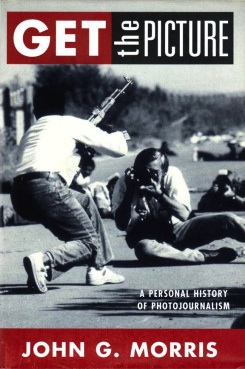
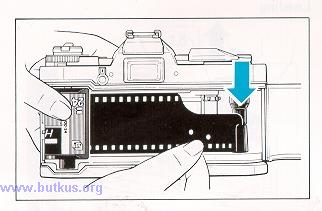
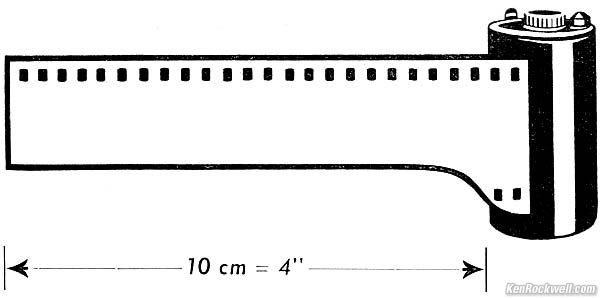
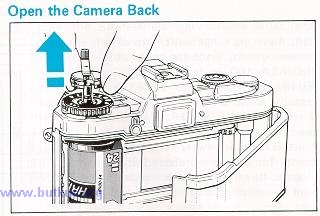
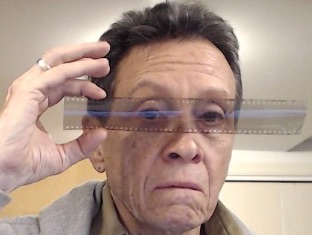
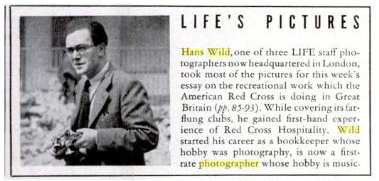
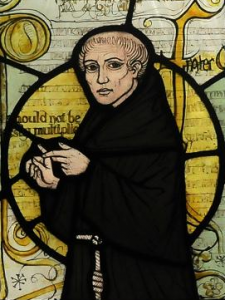




Wow – A.D what a article very interesting – and it inform me on things about what Photographic history I did not know – Well give Staten island my best regards where old friends – Artist now of Norway Maine –
Thanks for keeping on with this investigation, and for calling the bullshitters to account.
Cheers,
Peter
“pea soup,” “gray soup,” “gray mud,” and such.
=========================
It is possible this is what he saw if he did not fully fix the film. Uncleared film may look like that. Somehow the fact the 11 frames did not look that way tells us either it was the roll first in the fix and last out – so got cleared while the others did not. Or, in taking the film out of the fixer he saw the frames not fully cleared and finished fixing that roll while he ‘forgot’ the other three?
Given 60 years to think a good excuse should have been made by now.
Safe to assume that with two professional darkroom managers on hand — Bradshaw and Wild — any film that Morris saw had undergone correct processing. Especially since this was crucial film for which they had waited anxiously, and on which they and their four assistants could concentrate their attention.
All things being equal, the simple explanation is usually the right one. In this case, that would mean the only thing “wrong” with Capa’s film was that so little of it showed the actual battle on Omaha Beach — for which Morris, in defense of his best friend, needed to cook up some excuse.